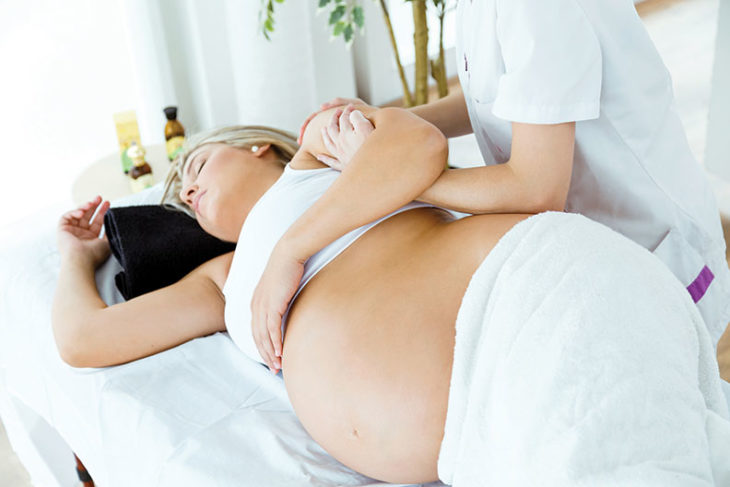The difference between a prenatal massage and a regular massage is technique. The therapist addresses the many anatomical changes a woman’s body undergoes during pregnancy. Prenatal massage with a trained professional is believed to be a completely safe and useful treatment for the discomfort, pain, swelling, tension and stress associated with pregnancy. Although this is a gentle, non-invasive approach, always consult your doctor first.
If a doctor considers a woman high risk due to medical conditions, massage at any time is not recommended. The first trimester brings changes to a woman’s body, so most doctors and therapists do not recommend massage until the second and third trimester. Seeking expert advise is vital during pregnancy.
Prenatal massage is a specialized certification, and most therapists who practice it have received advanced education in safe techniques. Keep in mind that not all states have laws requiring certification or additional education in safe techniques for pregnancy. Consult with a qualified therapist who understands the areas to target, which to avoid and the appropriate amount of pressure to use on different areas of the body.
Circulatory changes happen to a woman in preparation for birth. Pregnancy massage therapists avoid deep massage and strong pressure on the legs, especially the calves and inner thigh area. It’s believed there are trigger points in the body that can cause contractions, so seeking someone qualified and getting your doctor’s approval is extremely important.
HOW OFTEN CAN SOMEONE GET PRENATAL MASSAGE?
You may choose to coincide your massage appointment with your OB/ GYN appointments. Communicate to your doctor that you are interested in prenatal massage services and your reasons. Proper care and guidance by your OB/GYN must be the top priority. Many doctors welcome the discussion about easing patients’ discomfort during pregnancy.
HOW LONG ARE SESSIONS?
Most prenatal massage sessions last 50 minutes to one hour. For comfort and safety, the mother lies on her side with pillows placed where necessary for proper support. The woman will be draped for privacy and comfort at all times.
While many may consider massage a luxury, pregnancy is one of the most beneficial times for a woman to have it. Find a qualified therapist in your area; ask your OB/GYN if they have a therapist on staff. Many hotel resorts along the Coast employ certified therapists, and many privately owned clinics, spas and salons would be happy to care for you, whether with prenatal massage or treatments after birth. I urge you to research the many modalities of massage available to you. These include the following, and some require certification: Prenatal, aromatherapy (limited to certain oils during pregnancy), Swedish, deep tissue, hot stone, sports, trigger point, reflexology, shiatsu, Thai, couples, chair and ashiatsu.
We have many talented qualified therapists locally; seek one you are comfortable with and enjoy massage’s many benefits.
Please note that COVID-19 has altered therapists’ ability to provide many types of services. As state restrictions slowly lift and scheduling resumes, personal protective equipment (PPE) will be the new normal for a period of time. Disposable sheets may replace soft linens to ensure we are staying within guidelines and protecting public health. Follow your doctor’s recommendations; we will get through this more aware that health, family and the work we do for self and others are priceless.
Meza is an aesthetician, laser technician and Ideal Protein coach with the Woman’s Clinic PA. Reach her at (228) 341-7879.


